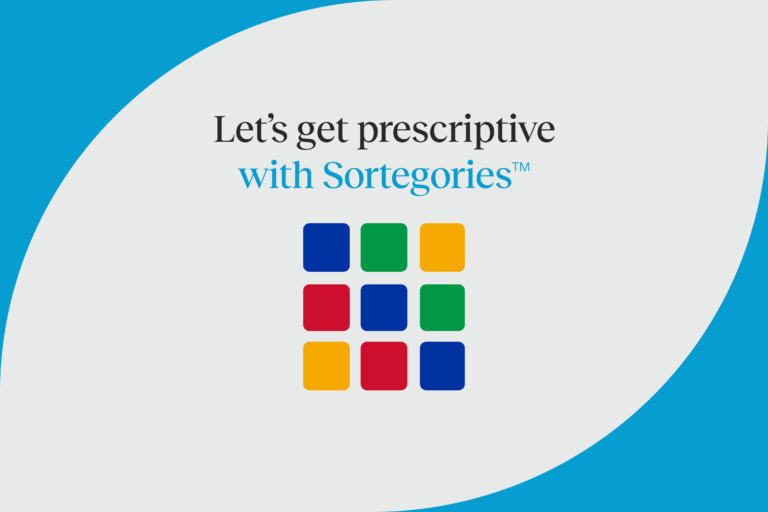How to help a child with dyslexia read
One of the most important steps in making sure children with dyslexia receive effective reading instruction is understanding these two truths: reading well with dyslexia is challenging and also very possible. The International Dyslexia Association speculates that about 15-20% of the population shows signs of dyslexia–though many will never have a diagnosis. Teaching reading to students with dyslexia means focusing on instruction that is structured, sequential, and highly multisensory in order to increase the chance of retention.

Dyslexia defined
Dyslexia is a neurological learning disability where the mind has trouble processing and understanding words and letters. Those dealing with dyslexia often have trouble with phonemes, which is the ability to break apart a word by sounds. While there is no cure for dyslexia it is treatable.
One of the most important yet frequently overlooked aspects of dyslexia is that not all children who have dyslexia will have a specific diagnosis and not all states even require screening to identify reading difficulties. While there is pending legislation in many states to address these requirements, it is often up to teachers and parents to be aware of both family history (it is known to be genetic) and the signs that indicate that a child may be at risk for dyslexia.
How dyslexia affects reading
Many people falsely believe that dyslexia means that children see or produce letters and numbers upside down. While reversals can be a sign of dyslexia, the root cause of dyslexia doesn’t have to do with how someone “sees” letters on a page.
Children with dyslexia often have gaps in phonemic and phonological awareness skills, resulting in difficulties with decoding, reading fluency, and spelling. Dyslexia can also impact reading comprehension and other language-based skills like writing and word pronunciation (Reading Rockets). In addition, children with dyslexia often experience other language-based difficulties including challenges with reading comprehension—the ultimate goal of reading instruction—which requires automatic decoding and word recognition in order to lighten the cognitive load enough for the brain to make meaning from a text.
Children with dyslexia are frequently bright, engaged, and sometimes even what schools might consider to be “gifted” students. It’s important to understand that children with dyslexia can show signs of difficulty with working memory, recall, and recognition of common shapes, objects, and letter names and difficulty distinguishing or identifying specific phonemes (the smallest sound unit in a word) from a very young age. This is why utilizing a universal screener or a Rapid Automatic Naming (RAN) tool with preschool age children can be so critical to identifying when a child has these difficulties.
It’s also important to understand that individuals with dyslexia can also have problems with spoken language, even when they have received explicit attention and instruction at home and at school. Other issues could include inability to express oneself clearly, or trouble understanding what others are trying to express. These flags can be more difficult to recognize, but they can lead to major problems in school, in the workplace, and in relating to other people. Most people don’t realize that the effects of dyslexia reach well beyond the classroom (International Dyslexia Association).
Nurturing reading skills
While reading is often considered an “academic” skill, reading skills do not just benefit kids in the context of school. Foundational reading skills are important because they allow children access to learning about a whole range of topics they are interested in. Reading skills can seem isolated and independent of one another as they are taught, but if we pull back and look at the bigger picture, each skill allows for another skill to be built on top—like a staircase—with the ultimate goal being full automaticity and fluency which allows for meaning making.
In 2000, The National Reading Panel (formed by congress, the NICHD, and the US Department of Education) published a review of more 100,000 studies on the best approaches to teaching reading. This project resulted in recommendations to provide children with direct, explicit instruction on The Big 5:
- Phonemic Awareness: this is based in the spoken sound (cat = /k/-/a/-/t/)
- Phonics: sound/symbol association or alphabetic principle (the letter a can say /a/, /ā/, or /o/)
- Fluency: reading with speed, accuracy, expression, and understanding at the sentence level
- Vocabulary: explicit instruction on both what specific words mean and how to break down and understand unfamiliar words
- Comprehension: ability to understand, connect with, and think critically about a text
Strategies for helping children with dyslexia
There are many ways a teacher or parent can learn how to help a child with dyslexia read. Let’s make sure they are receiving the best instruction and practice possible. For a child with dyslexia, everyone that has reading tools for dyslexia is someone that can help. Here are some tips for teaching students both at school and at home.
Tips for teaching reading to students with dyslexia in the classroom
Teaching in a classroom filled with students that learn differently and have varying needs is already challenging. This is why it’s important to identify accommodations or strategies teachers can use to support children with dyslexia that are reasonable and not overwhelming. Here are a few things an already busy teacher can do to make sure students with dyslexia are most effectively supported in learning to read:
- Repeat instructions and provide a visual if appropriate: this is one of those strategies that benefits all students. Repeating directions and offering a second way to take in the information helps students that may not have been able to comprehend the important information the first time it was stated.
- Provide a graphic organizer: as with above, offering a concrete material to anchor information allows students—especially those with dyslexia—a way to activate prior knowledge and make connections with new information.
- Design hierarchical worksheets: when children experience success early on in an academic activity, they are more likely to persevere when something feels more difficult. The teacher can design activities or worksheets with problems arranged from easiest to hardest to help facilitate this successful feeling early on.
Tips for supporting students with dyslexia at home
Understanding how to best support children with dyslexia at home can be challenging, and it can also be hugely helpful and rewarding for both you and your child. Here are some tips to help you get started.
- Help them understand strengths and areas of development: everyone has things they are struggling with; helping your child to understand that there are many things they are good at, and that reading is something they have to keep working on helps them to have a growth mindset.
- Advocate for your child and teach them to advocate for themselves: you are your child’s most important advocate. Speak up and ask for help from teachers and administrators. Teach your child that they know themselves best, and that they can use their voice to ask for what they need at school. Consider spending some time talking through difficult scenarios they may find themselves in. You could even offer language they might try to help them speak up and ask for what they need.
- Emphasize daily review: children with dyslexia also often struggle with a poor working memory. Reviewing critical skills or ideas daily at home with a parent or, eventually, on their own will help to keep important concepts top of mind and better facilitate learning new material.
Reading programs for students with dyslexia
When it comes to the most effective reading instruction for students with dyslexia, relying on materials and methods that are based in the science of reading is the first most important step to knowing instruction is evidence-based and evidence-aligned. A program that follows structured literacy will provide the explicit, systematic, sequential, and comprehensive approach that students with dyslexia need.
In fact in 2020 the International Dyslexia Association published a paper, featuring contributions from Louisa Moats, EdD, that calls structured literacy “the most effective approach for students who experience unusual difficulty learning to read and spell printed words.” The paper explains that: “Evidence is strong that the majority of students learn to read better with structured teaching of basic language skills, and that the components and methods of structured literacy are critical for students with reading disabilities including dyslexia. Through explicit instruction and practice, students with dyslexia can be taught to understand and remember patterns of letter use in the writing system.”
Once you know that the program you choose is backed by science and ongoing efficacy studies to ensure that it is having an impact on students, you should look at the components of the reading program to see what is included.
A few important things to consider when thinking about supporting students with dyslexia:
- Assessment or screening: having a means for continually assessing students as they begin and then progress in a reading program is essential; it allows for identification of skill deficits and correct placement along an instructional continuum. It also allows teachers to group students according to what they need.
- Does your program have phonemic awareness instruction woven throughout? A student with dyslexia often has trouble distinguishing between short vowel sounds. An example of this might be that the /i/ in “lit” and the /e/ in “let” might sound really similar if not the same. It takes practice and exposure to writing sounds while saying sounds and then reading words with that specific sound in the context of a sentence or phrase.
- Phonics instruction is essential when teaching students with dyslexia how to read. Children with dyslexia need a systematic, structured, and sequential approach to learning how letters and letter patterns represent sounds in spoken language.
- Vocabulary instruction and word study strategies are critical to help children with dyslexia build confidence in decoding multisyllabic words, and to build content-specific background knowledge. By doing this in advance and throughout reading, it offers students a way to anchor new information in previously learned words and concepts. This will increase the likelihood that students can read and comprehend on grade level.
- Finally, a reading program that’s supporting students with dyslexia will mirror an acceleration model and not just remediation. This means it will have Tier 1 core instruction to be delivered in whole-class format, and will also include Tier 2 intervention instruction and Tier 3 intensive intervention materials. This ensures that students with dyslexia are receiving instruction multiple times a day on the same concepts—both at grade level and where they may have skill gaps in need of support.
What to avoid for children with dyslexia
In recent years there has been a movement to ensure that teachers of young children are including phonics instruction when teaching kids how to read. For children who have dyslexia, this is critical.
The balanced reading approach, which is geared more towards activities where kids are taught to use the context of the story and images as cues or clues for what certain words say, does not help students with dyslexia learn how to read well. While phonics may be taught during word study with this approach, it isn’t always emphasized and it’s rarely taught systematically in a fashion that would be helpful to supporting students with dyslexia.
Similarly, simply learning to “read by sight” isn’t helpful either. While this may appear to work in the beginning stages of reading where most words are short, one syllable words that follow predictable patterns, eventually as students move into the upper elementary grades, they will be presented with more complex, multisyllabic words that require an understanding of regular and irregular spelling patterns and knowledge of how to break down and decode words with 3, 4, 5, and even 6 syllables.
With a program that includes phonics instruction, students with dyslexia will learn, step by step, about all sound and letter combinations as well as strategies for decoding words with many syllables. This is the way to help students with dyslexia learn how to read and comprehend at a deeper level.
How 95 Percent Group can help improve reading for students with dyslexia
Looking for a reading program that can help support students with dyslexia? 95 Percent Group is an industry leader in science-backed, evidence-based, and evidence-aligned instruction. Our Tier 1 core instruction, 95 Phonics Core Program® is available for grades K-5. For students who need further support, including students with dyslexia, 95 Percent Group also offers Tier 2 intervention products such as 95 Phonics Lesson Library™ and 95 Phonics Chip Kit™.
For those students that need additional, small group, intensive reading instruction, we are excited to bring Tier 3 instruction in the form of 95 RAP™ (Reading Achievement Program), a technology-based, teacher-directed intervention solution for students who are persistently struggling to learn to read, including those with dyslexia.
Learn more
95 Percent Group brings over two decades of thought leadership in the science of reading and evidence-aligned assessment and instruction in the five foundational skills of phonemic awareness, phonics, fluency, vocabulary, and comprehension. We have worked with school districts and educators across the country to unlock the power of literacy for every child. We look forward to sharing with you what we’ve learned, along with best practices and resources you can bring to the classroom.
Contact our team to learn how the One95 Literacy Ecosystem can transform your reading instruction.



